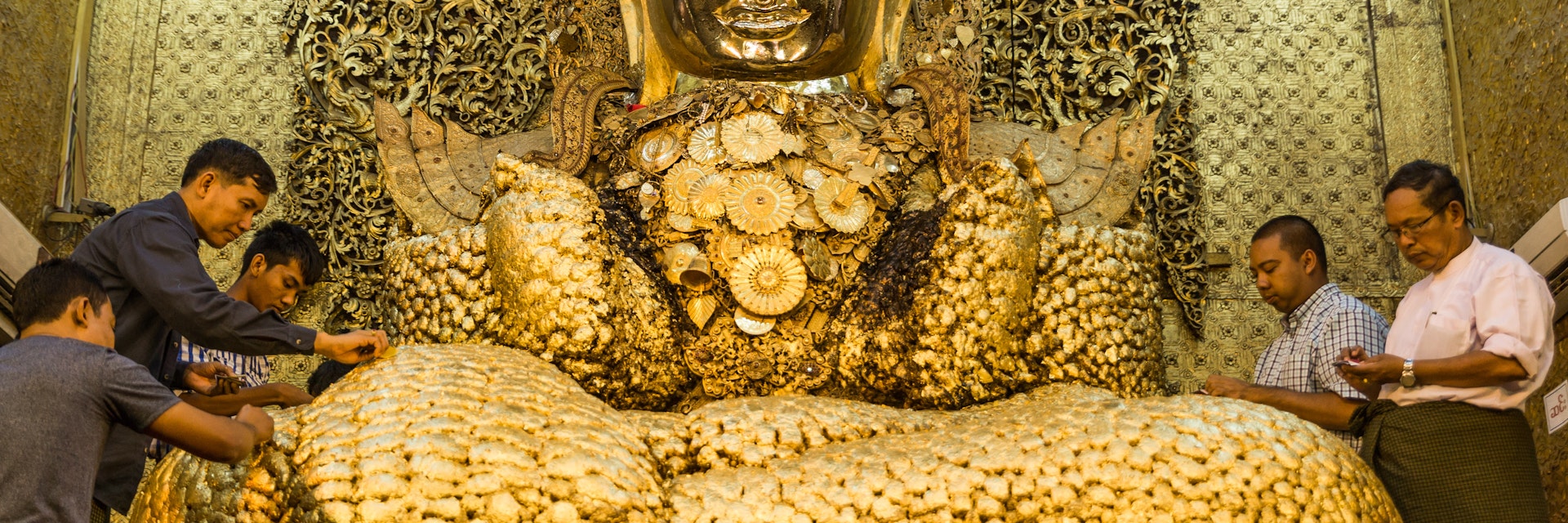Every day, thousands of colourfully dressed faithful venerate Mahamuni's 13ft-tall seated buddha, a nationally celebrated image that’s popularly believed to be some 2000 years old. Centuries of votary gold leaf applied by male devotees (women may only watch) have left the figure knobbly with a 6in layer of pure gold…except on his radiantly gleaming face, which is ceremonially polished daily at 4.30am.
The statue was already ancient in 1784 when it was seized from Mrauk U by the Burmese army of King Bodawpaya. The epic story of how it was dragged back to Mandalay is retold in a series of 1950s paintings in a picture gallery across the pagoda’s inner courtyard to the northeast of the Buddha image. Bodawpaya also nabbed a collection of Hindu-Buddhist Khmer bronze figures, which had already been pilfered centuries earlier from Angkor Wat, and reached Mrauk U by a series of other historical thefts. Many figures were reputedly melted down to make cannons for Mandalay’s 1885 defence against the British, but six rather battered figures remain, which have all been rubbed raw by devotees seeking good health. They're housed in a drab concrete building near the giant gong on the north side of the northwest inner courtyard.
Near Mahamuni's outer northeast exit you'll find a merrily kitsch clock tower and the Maha Buddhavamsa Museum of World Buddhism, which is effectively a gallery of paintings about the life of the Buddha, and photos of archaeological sites associated with that saga.
From the central shrine with its multitiered golden roof, long concrete passageways leading in each cardinal direction are crammed with stalls selling all manner of religio-tourist trinkets. The western passage (which foreigners are officially not permitted to access) emerges on 84th St amid fascinating marble workshops, where buddha statues are expertly crafted using power tools.
Mahamuni can be conveniently visited en route to Amarapura, Inwa or Sagaing.







